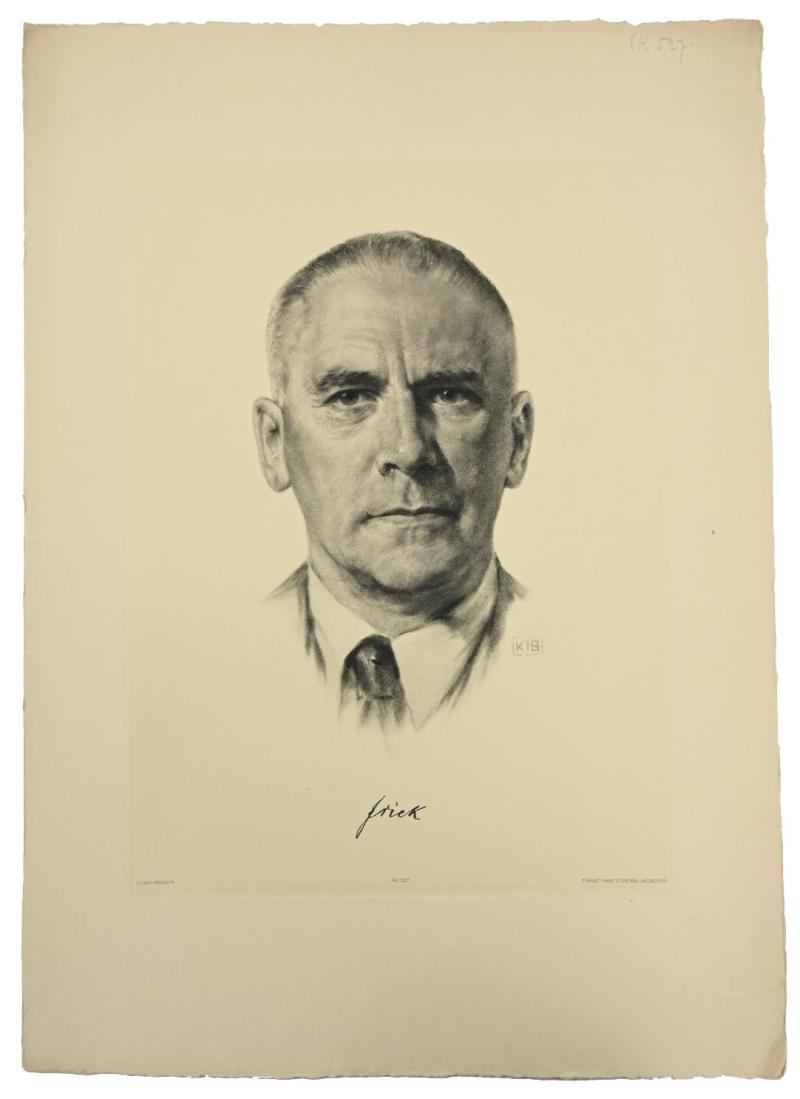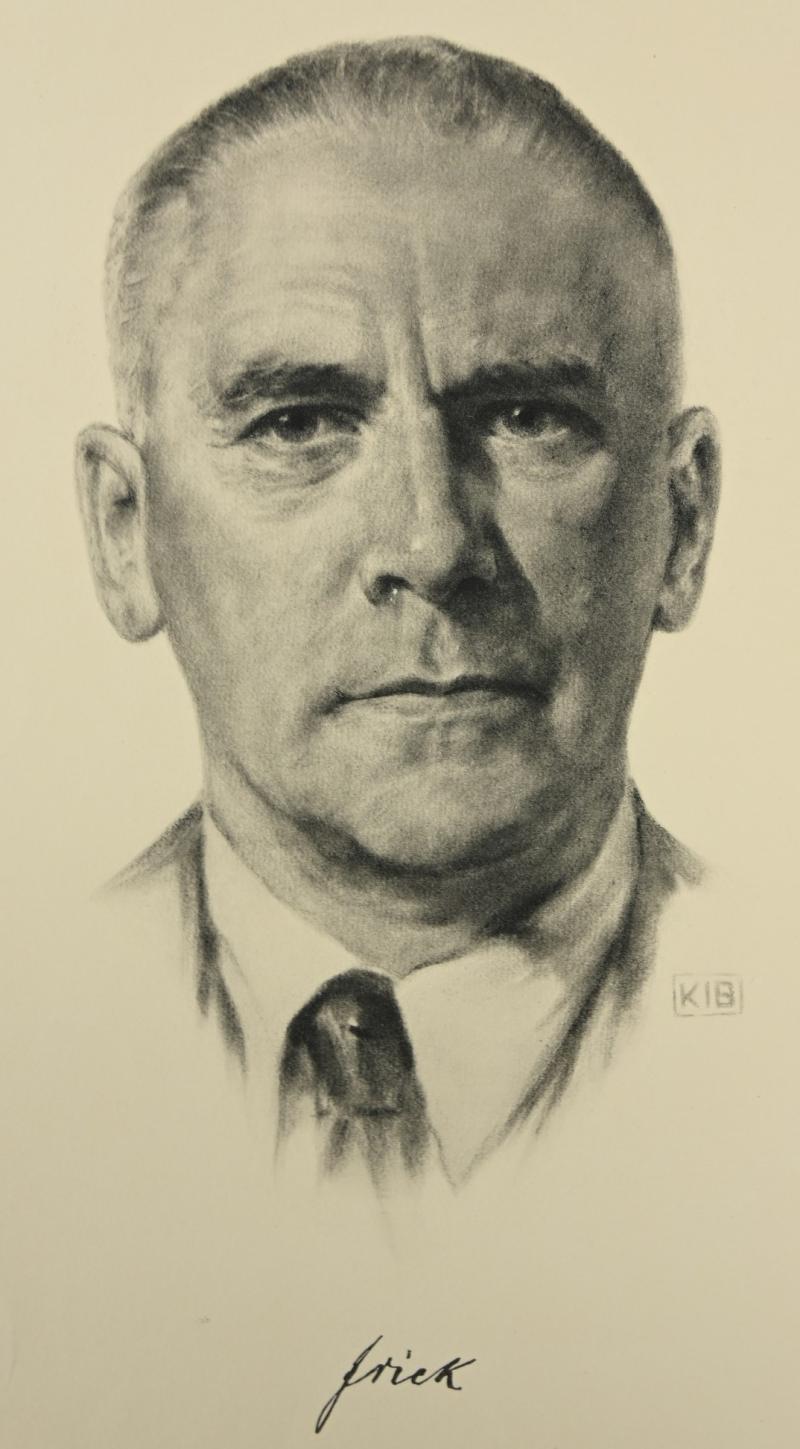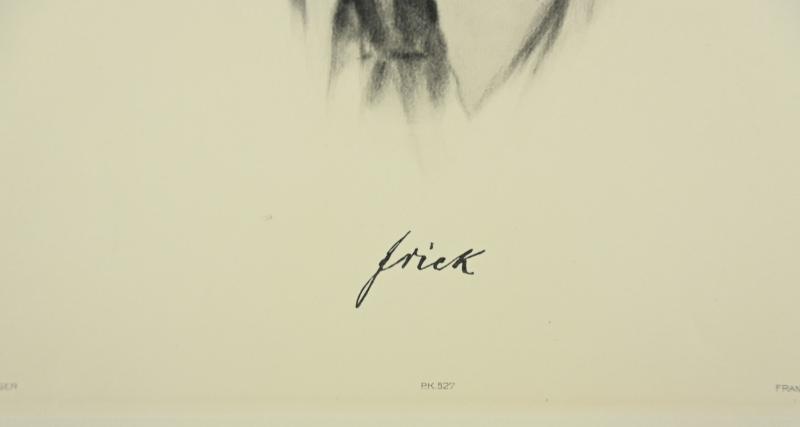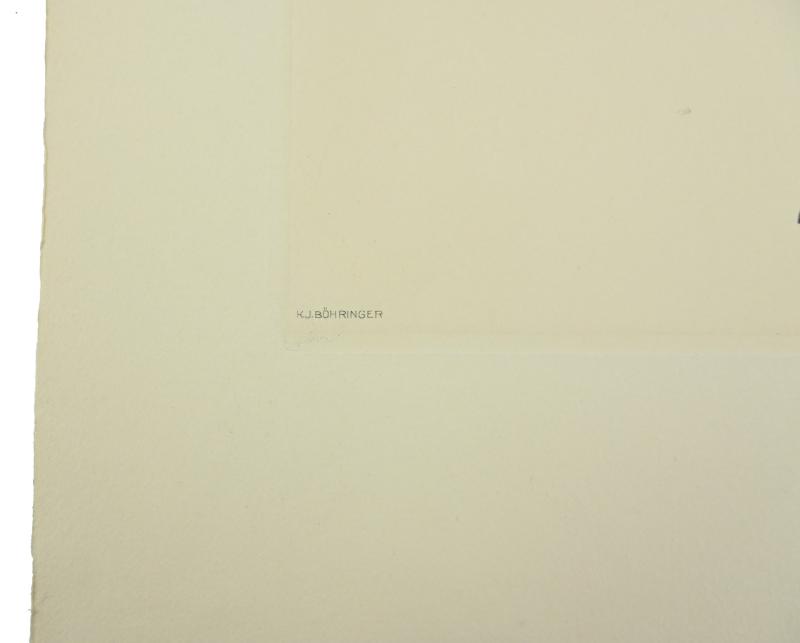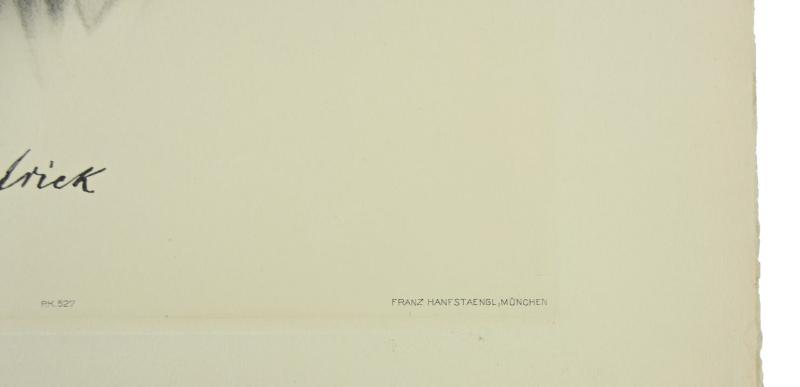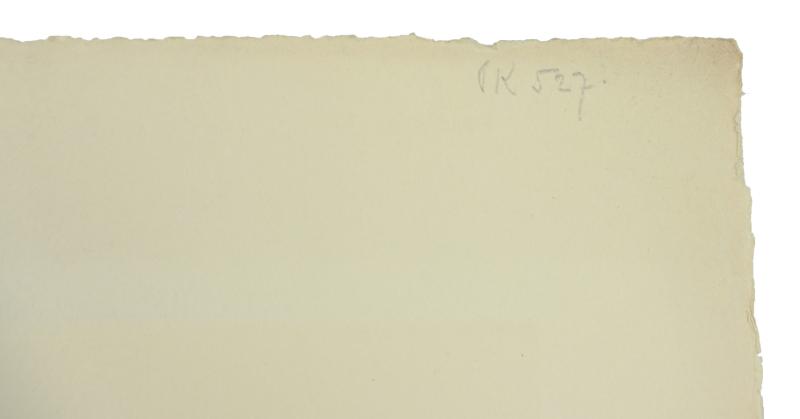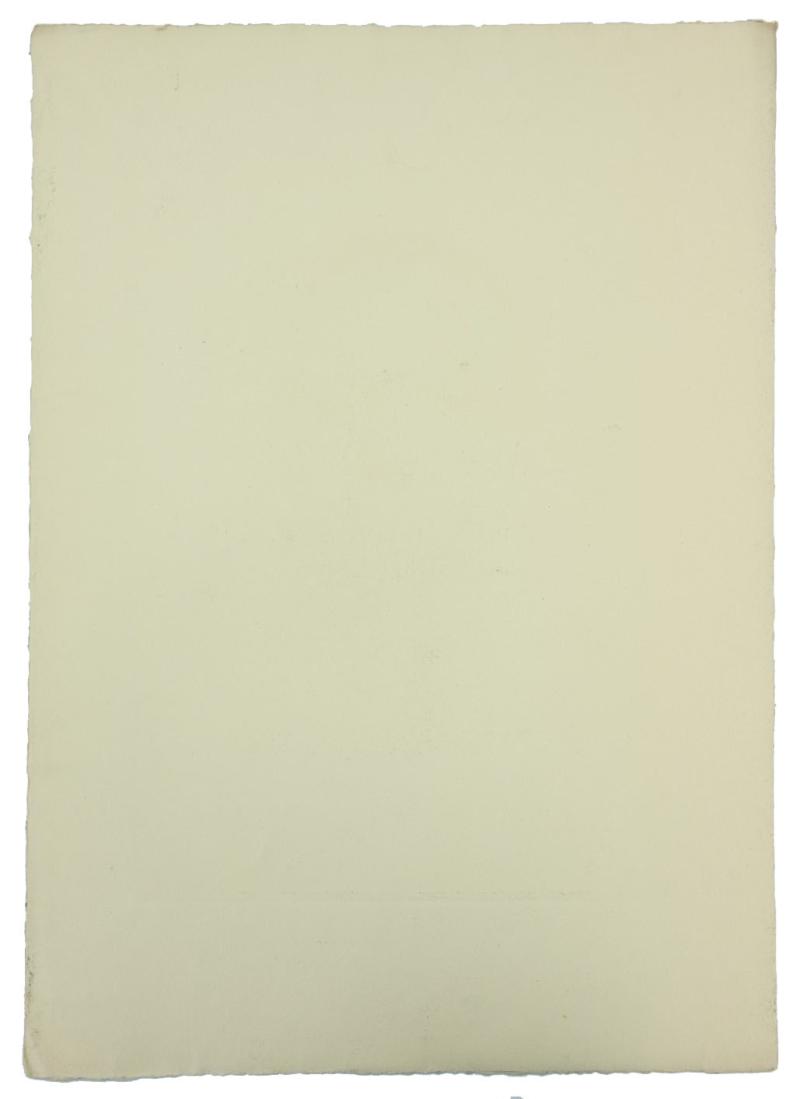German Portrait Print/Litho of Wilhelm Frick by K.J.Böhringer
In a very good condition and extreme rare to find a print of the charcoal drawing made by K.J. Böhringer of Wilhelm Frick.
The print comes in a size of 37x53cm and is uncut. The paper contains the pressing for a framework.
Wilhelm Frick (12 March 1877 – 16 October 1946) was a prominent German politician of the Nazi Party (NSDAP), who served as Minister of the Interior in Adolf Hitler's cabinet from 1933 to 1943 and as the last governor of the Protectorate of Bohemia and Moravia.
As the head of the Kriminalpolizei (criminal police) in Munich, Frick took part in Hitler's failed Beer Hall Putsch of 1923, for which he was convicted of high treason. He managed to avoid imprisonment and soon afterwards became a leading figure of the Nazi Party (NSDAP) in the Reichstag. After Hitler became Chancellor of Germany in 1933, Frick joined the new government and was named Minister of the Interior. Additionally, on 21 May 1935, Frick was named Generalbevollmächtigter für die Reichsverwaltung (General Plenipotentiary for the Administration of the Reich).He was instrumental in formulating laws that consolidated the Nazi regime (Gleichschaltung), as well as laws that defined the Nazi racial policy, most notoriously the Nuremberg Laws. On 30 August 1939, immediately prior to the outbreak of the Second World War, Frick was appointed by Hitler to the six-person Council of Ministers for Defense of the Reich which operated as a war cabinet. Following the rise of the SS, Frick gradually lost favour within the party, and in 1943 he was replaced by Heinrich Himmler as interior minister. Frick remained in the cabinet as a minister without portfolio until Hitler's death in 1945.
After World War II, Frick was tried and convicted of war crimes at the Nuremberg trials and executed by hanging.
This rare litho comes directly from the famous publishing house 'Franz Hanfstaengl' from Munich were it was discovered last year.
Franz Hanfstaengl was one of the intimate followers of Adolf Hitler.
Hanfstaengl and Hitler remained close through the 1920s and early 1930s.
He considered Hitler a diamond in the rough, lacking refinement and social skills. He took it upon himself to do the polishing. Introducing Hitler to Munich’s high society, he helped finance the publication of Mein Kampf and, dollar rich in inflation-hit Germany, bankrolled the NSDAP’s newspaper Völkischer Beobachter.
Code: 70225
495.00 EUR



